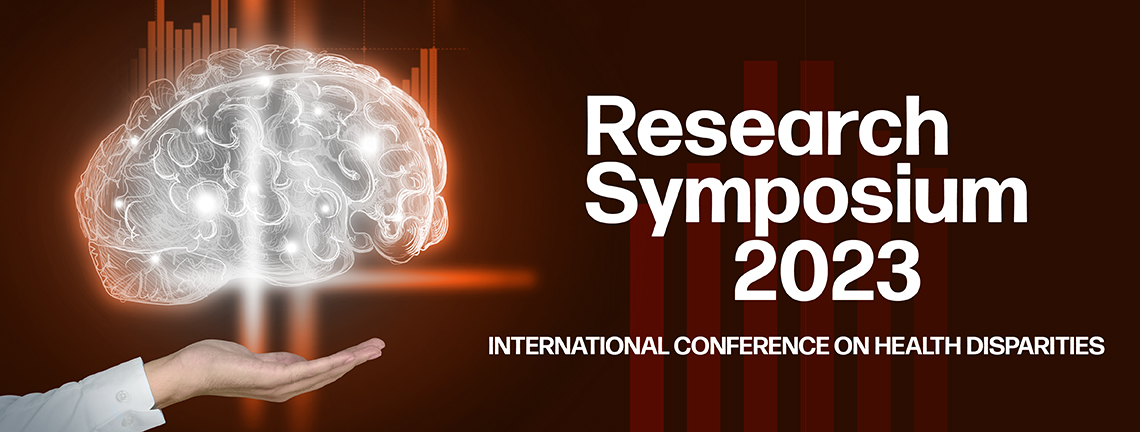
Posters
Academic/Professional Position (Other)
MS3
Presentation Type
Poster
Discipline Track
Patient Care
Abstract Type
Case Report
Abstract
Introduction: General Anxiety Disorder (GAD) is a relatively common disorder in the United States, which affects 6.8 million Americans. Selective Serotonin Reuptake Inhibitors (SSRIs) and Serotonin-Norepinephrine Reuptake Inhibitors (SNRIs) are considered the mainstay of pharmacologic treatment of GAD, along with behavioral modifications, such as Cognitive Behavioral Therapy (CBT). However, these medications may cause harmful side effects in unique individuals. This abstract will discuss the unusual side effect of acute angle closure glaucoma in a male while being treated for GAD with an SSRI.
Case Presentation: The patient is a 60-year-old male with a history of diabetes mellitus, chronic kidney disease, a right below the knee amputation, and right eye blindness from a prior glaucoma episode who presented with new onset GAD. He complains of insomnia due to his health complications, anxiety, and over thinking. He was prescribed escitalopram, an SSRI, and referred to CBT to treat his symptoms of GAD. After starting the medication, the patient noticed an increase in his glaucoma symptoms in his left eye and the medication was discontinued. This provided relief of his intraocular pain. Patient was switched to mirtazapine 7.5 mg, a tetracyclic antidepressant, with improvement in his anxiety symptoms and no signs of glaucoma.
Discussion: SSRIs continue to be used as the first line therapy for GAD and other psychiatric illnesses because of their treatment efficacy. An article published in 2020 suggested that nearly 37 million Americans are on antidepressants, the majority of which are SSRIs. Some of the common side effects of SSRIs include nausea, dry mouth, headache, insomnia, diarrhea, sexual dysfunction, somnolence, sweating, tremor, and weight change. 10 to 20% of people on SSRI discontinue use due to side effects. Research is unclear of the ophthalmologic complications resulting from SSRI use. Previous studies suggest that there is no link between SSRI use and raising intraocular pressure, and others showed a slight association of cataract development with SSRI use. This research brings to question whether the patient could be trialed on a different SSRI as glaucoma does not appear to be a well-proven class side effect. Further research and case studies should be done to determine if SSRIs can exacerbate symptoms in individuals with prior acute angle closure glaucoma attacks. Due to the prevalence of anxiety, depression, and SSRI use, one must be familiar with both common and rare side effects and classify whether they are class side effects or not.
Recommended Citation
Althaus, Elizabeth; Campos, Pamela; Arab, Shuaibahmed M.; Selva, Sidney; Bialaszewski, Ryan; and Chang, Chelsea, "Exacerbation of Acute Angle Closure Glaucoma Symptoms Following SSRI Use" (2024). Research Symposium. 15.
https://scholarworks.utrgv.edu/somrs/2023/posters/15
Included in
Exacerbation of Acute Angle Closure Glaucoma Symptoms Following SSRI Use
Introduction: General Anxiety Disorder (GAD) is a relatively common disorder in the United States, which affects 6.8 million Americans. Selective Serotonin Reuptake Inhibitors (SSRIs) and Serotonin-Norepinephrine Reuptake Inhibitors (SNRIs) are considered the mainstay of pharmacologic treatment of GAD, along with behavioral modifications, such as Cognitive Behavioral Therapy (CBT). However, these medications may cause harmful side effects in unique individuals. This abstract will discuss the unusual side effect of acute angle closure glaucoma in a male while being treated for GAD with an SSRI.
Case Presentation: The patient is a 60-year-old male with a history of diabetes mellitus, chronic kidney disease, a right below the knee amputation, and right eye blindness from a prior glaucoma episode who presented with new onset GAD. He complains of insomnia due to his health complications, anxiety, and over thinking. He was prescribed escitalopram, an SSRI, and referred to CBT to treat his symptoms of GAD. After starting the medication, the patient noticed an increase in his glaucoma symptoms in his left eye and the medication was discontinued. This provided relief of his intraocular pain. Patient was switched to mirtazapine 7.5 mg, a tetracyclic antidepressant, with improvement in his anxiety symptoms and no signs of glaucoma.
Discussion: SSRIs continue to be used as the first line therapy for GAD and other psychiatric illnesses because of their treatment efficacy. An article published in 2020 suggested that nearly 37 million Americans are on antidepressants, the majority of which are SSRIs. Some of the common side effects of SSRIs include nausea, dry mouth, headache, insomnia, diarrhea, sexual dysfunction, somnolence, sweating, tremor, and weight change. 10 to 20% of people on SSRI discontinue use due to side effects. Research is unclear of the ophthalmologic complications resulting from SSRI use. Previous studies suggest that there is no link between SSRI use and raising intraocular pressure, and others showed a slight association of cataract development with SSRI use. This research brings to question whether the patient could be trialed on a different SSRI as glaucoma does not appear to be a well-proven class side effect. Further research and case studies should be done to determine if SSRIs can exacerbate symptoms in individuals with prior acute angle closure glaucoma attacks. Due to the prevalence of anxiety, depression, and SSRI use, one must be familiar with both common and rare side effects and classify whether they are class side effects or not.

